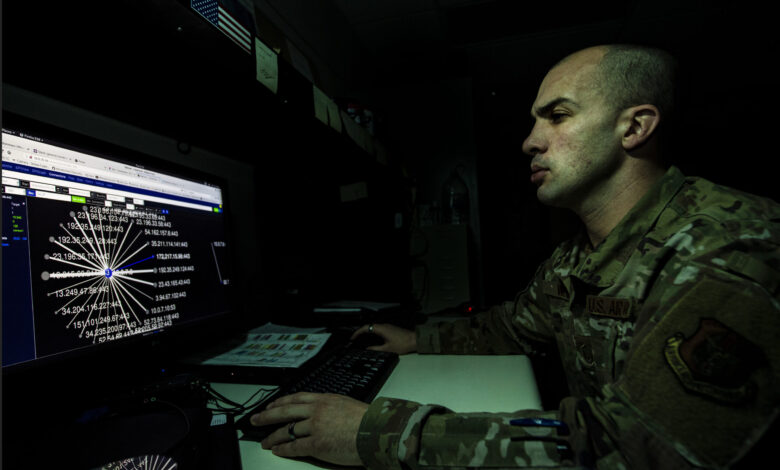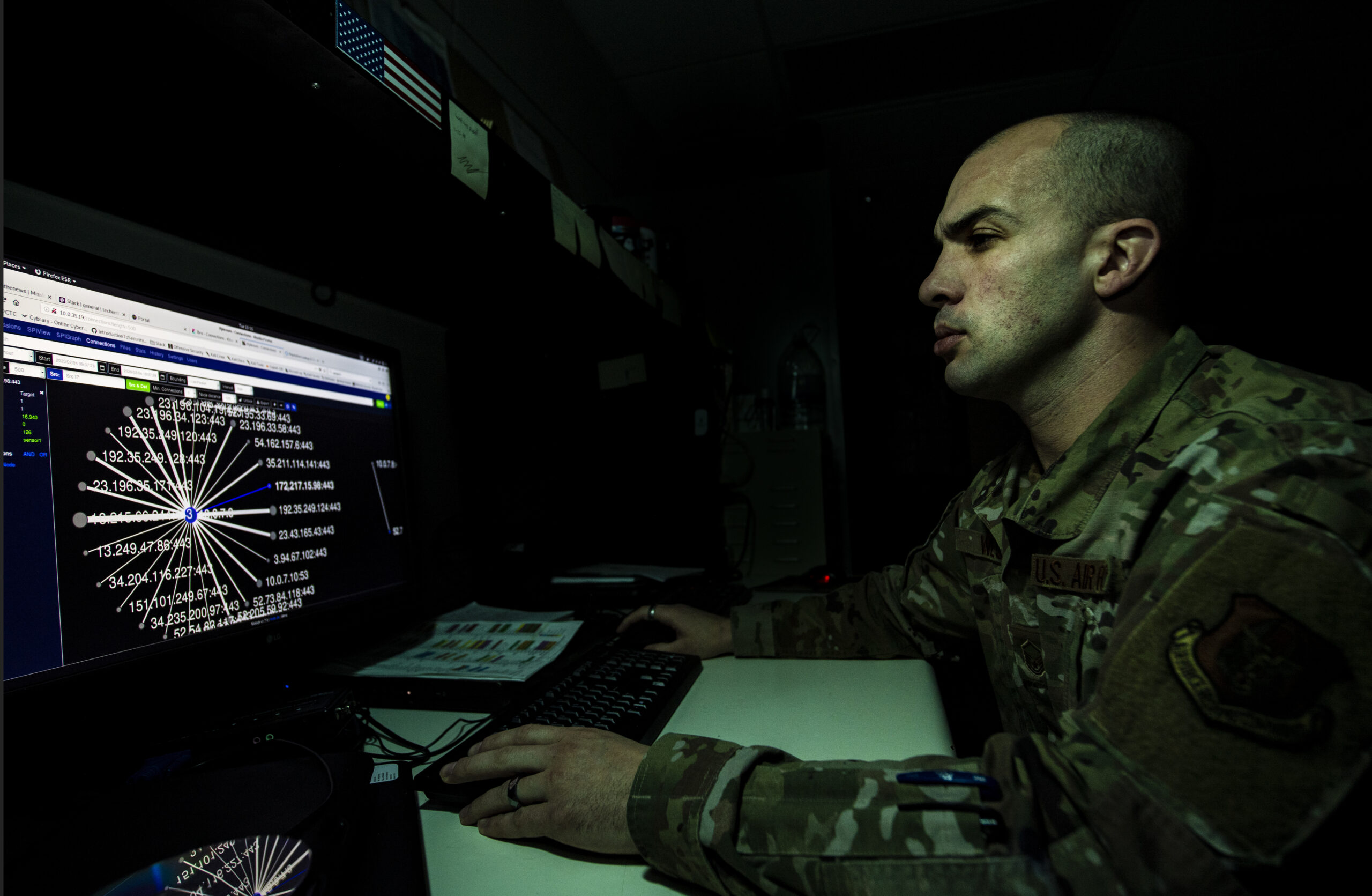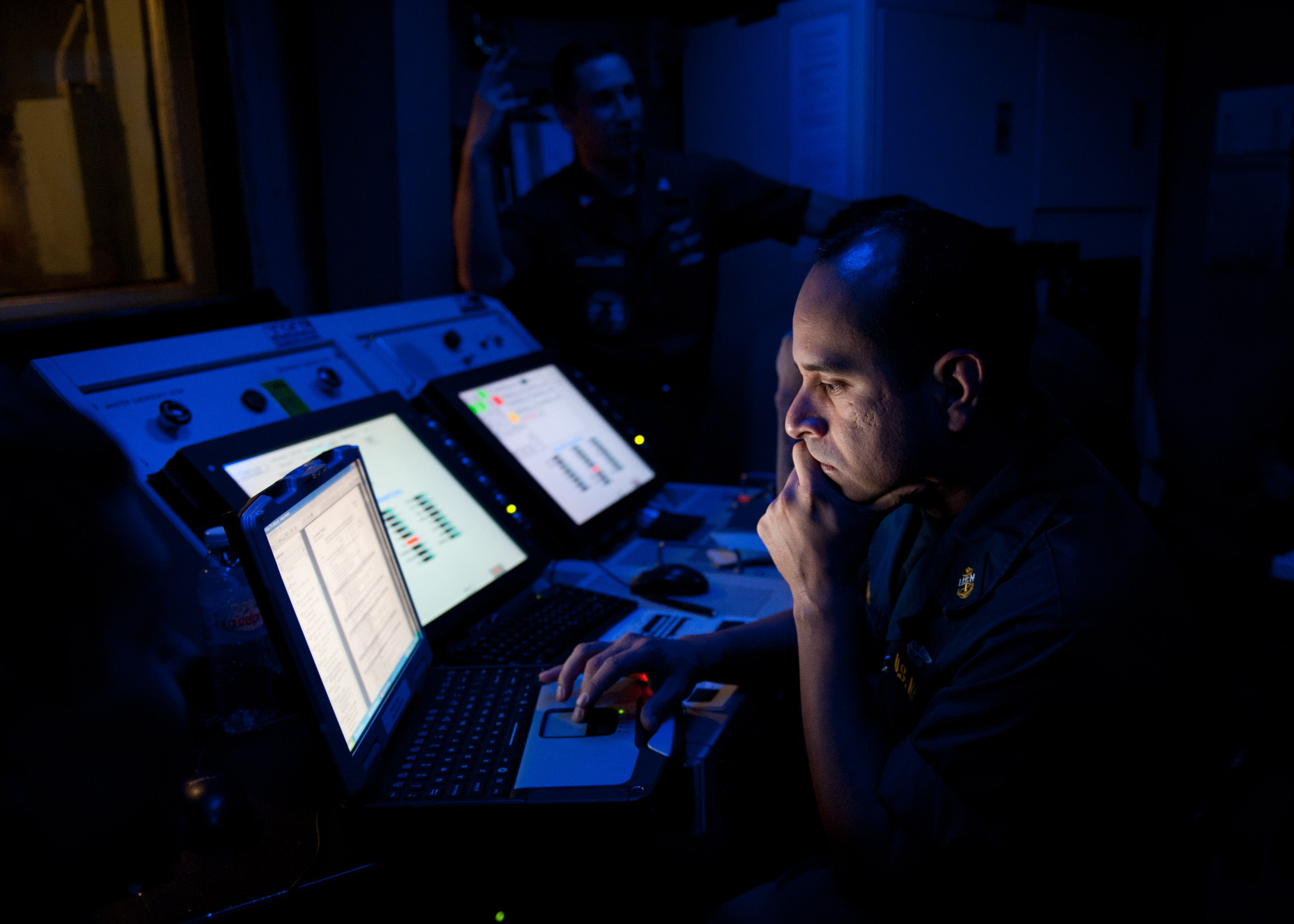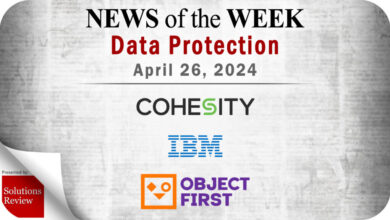How does big data promise to transform the battlefield?

The emergence of big data technologies marks the commencement of a new stage in data-centric decision-making, offering unparalleled prospects for diverse stakeholders to extract valuable insights from vast and diverse datasets. Within the military domain, defined by the critical importance of information dominance, skilful deployment of big data analytics has the potential to confer a competitive edge amid complex and ever-evolving operational environments. This article investigates the transformative potential of big data within military operations, with a specific focus on its ramifications for strategic formulation, tactical implementation, and overall battlefield performance.
The potential of big data to revolutionise battlefield dynamics has attracted considerable attention within military and intelligence circles. The prospect of harnessing extensive datasets to inform decision-making processes, augment situational awareness, and optimise military endeavours has captivated the interest of defence analysts and policymakers alike. With the proliferation of digital information from varied sources such as mobile Internet, social media, and the Internet of Things, big data analytics has gained a central role in contemporary warfare strategies due to its capacity to transform the conceptualisation, planning, and execution of armed conflicts.
Understanding big data
Big data refers to large volumes of structured and unstructured data that cannot be processed using traditional methods and is characterised by high volume, velocity, variety, veracity, and value. The 5Vs framework provides a holistic understanding of big data, highlighting the diverse nature of data sources and the challenges associated with processing and extracting insights from such datasets. In this regard, velocity pertains to the pace at which data is generated and its rate of movement; volume signifies the scale of data that meets the criteria for Big Data; value denotes the utility and significance of the data; variety encapsulates the breadth of diversity inherent in data types; and veracity reflects the reliability and precision of the data. While volume, velocity, variety, veracity, and value encompass a broad spectrum and contribute significantly to elucidating the appropriate utilisation of big data, one more characteristic can be added - variability. This may not define big data per se, but it underscores the imperative of its effective management. Variability pertains to inconsistencies either in the utilisation or the transmission of Big Data.

Credit: US Army/Sgt Justin Silvers
In essence, big data represents a paradigm shift in data management, requiring innovative approaches to harness the potential value hidden within vast and complex data repositories. In the context of warfare, big data encompasses diverse sources such as satellite imagery, sensor data, social media feeds, and communication intercepts. The sheer volume, velocity, and variety of data generated in modern conflicts present both challenges and opportunities for military organisations. By leveraging advanced analytics techniques, such as machine learning (ML) and artificial intelligence (AI), militaries can extract actionable insights from vast datasets, enabling them to gain a competitive edge on the battlefield.
The changing character of war
The Prussian military strategist Carl von Clausewitz remarked that while the essence of war remains constant, its manifestations evolve over time. Consequently, these evolving manifestations necessitate the adaptation of military methodologies. The evolving nature of conflict, encompassing its various modalities, geographical theatres, weaponry, and technological advancements, is undergoing rapid transformation. A notable illustration of such evolution occurred during the transition from World War I to World War II, where technological innovations played a pivotal role in fundamentally reshaping the landscape of warfare. This transformation was evidenced by the widespread adoption of mechanised warfare, including wheeled and tracked vehicles, the extensive utilisation of aircraft such as bombers and fighters, and the ubiquitous integration of radio communication for the coordination of geographically dispersed military units. These advancements brought about a profound shift in the conduct of military operations, prompting corresponding adaptations in organisational structures, training methodologies, and leadership. Nations that adeptly capitalised on these transformative developments attained decisive advantages on the battlefield.
Currently, we are witnessing yet another significant shift in warfare, predominantly propelled by advancements in technology. The forthcoming conflicts will be characterised by the widespread deployment of sensors endowed with extensive data collection and processing capabilities, thus mitigating the capacity for military forces to conceal their activities. The proliferation of cost-effective autonomous platforms, complemented by commercial imaging technologies and behaviour-tracking datasets bolstered by AI and analytical tools, will speed up environmental perception and comprehension. Additionally, the proliferation of affordable unmanned aerial vehicles (UAVs), loitering munitions, and precision-guided ordnance exhibiting enhanced speed, range, and accuracy will further diminish the temporal gap required to engage targets effectively. Robotics and additive manufacturing techniques will revolutionise the logistical paradigms governing military supply and sustainment operations.
The extensive incorporation of sensors, AI-enhanced weaponry, and long-range precision artillery systems will diminish the relative agility of even the fastest platforms and increase the susceptibility of concealed formations to detection. Moreover, the increasing advancement of space-based and cyber-enabled platforms and capabilities, spanning both kinetic and non-kinetic domains, underscores that the strategic terrain in forthcoming conflicts will extend beyond terrestrial confines. The foundational principles governing battlefield dynamics, encompassing observation, engagement, mobility, communication, protection, and logistical support, are undergoing notable transformations. Consequently, organisational attributes will necessitate adaptability, extensive dispersion, quasi-autonomous functionality, self-sufficiency, sustained mobility, and intermittent consolidation of efforts for critical manoeuvres. Within this operational framework, the significance of decentralised mission command will be emphasised, rendering centralised, overly prescriptive leadership obsolete.

Credit: US Navy; Heather Wilburn
Hence, a thorough reassessment of strategies is imperative, wherein open-source data is assigned parity with conventional government intelligence to optimise the effectiveness of military endeavours. Additionally, personnel within military ranks, regardless of their foundational training, must demonstrate adaptability to multifaceted warfare theatres, acknowledging the contemporaneous existence of information-centric confrontations alongside conventional kinetic engagements. Despite the emergence of unconventional challenges and the advent of novel conflict resolution methodologies, Western governmental entities and military institutions remain entrenched in conventional paradigms of warfare.
The growing role of big data in the evolving warfare
The current course of warfare has already started to value information superiority over mere firepower. This transition highlights the importance of incorporating diverse elements such as command, control, communications, computers, intelligence, surveillance, and reconnaissance (C4ISR) into military activities. At the heart of this progression lies the capacity to effectively gather, analyse, and rapidly and securely distribute essential information to military units.
By 2040, technological progressions, notably the convergence of increasingly economical sensor technologies and sophisticated big data analytics, imply a prospective paradigm alteration in the instantaneous identification and interpretation of information. Numerous international military bodies acknowledge this potential and are presently devising strategies to exploit information’s potency in fortifying their military tactics and capacities. These initiatives involve investigating nascent technologies, particularly AI, to enable persistent surveillance and refine decision-making procedures.
Defence intelligence agencies have a significant opportunity to harness the transformative capabilities of big data within intelligence analysis. By integrating data scientists into analytical teams, implementing tailored information technology solutions, and prioritising intelligence delivery, these agencies can improve the effectiveness of all-source intelligence analysis and decision-making. These efforts indicate the potential for a paradigm shift in both battlefield contexts and contemporary defence intelligence operations. In the domain of military strategic planning, the incorporation of big data analytics plays a crucial role in the conversion of raw data into actionable intelligence. Several pivotal applications of big data are evident in this context, including predictive analysis, situational awareness enhancement, threat assessment, decision-support mechanisms, and optimisation of logistical operations.
Big data offers diverse applications in military operations, impacting weapon systems reliant on extensive data inputs and enhancing military capabilities through advanced processing technologies such as AI and machine learning. Its use extends to optimising procurement, transportation, and redeployment operations, automating intelligence collection and analysis, and targeting adversaries’ data systems. Additionally, big data plays a crucial role in military detention operations, such as using biometric data for tracking individuals in counterterrorism efforts, necessitating extensive data storage infrastructure.
Moreover, big data’s emerging applications transcend traditional boundaries, incorporating AI-enabled facial recognition for targeting systems and utilising brain-computer interface (BCI) technology to facilitate data exchange among armed forces personnel in the field, potentially augmenting their capabilities. Thus, big data not only transforms military toolsets but also can revolutionise the capabilities of military personnel.
In 2017, the European Defence Agency conducted the ‘Big Data in Defence Modelling and Simulation’ study, referred to as ‘BIDADEMS’, advising EU Member States to prioritise the exploration of technologies such as cloud computing, non-relational databases, and data analytics. This was aimed at leveraging the substantial potential of big data for defence modelling and simulation purposes. Similarly, in the UK Ministry of Defence’s 2021 command paper titled ‘Defence in a Competitive Age’, the importance of “sharing and exploiting” data was emphasised as crucial for achieving multi-domain integration and attaining informational superiority. This underscores the evolving role of data from being a tool for comprehending battlefield dynamics to emerging as a strategic frontier.
Big data analytics holds promise in consolidating and structuring information, providing all-source analysts with access to extensive data volumes while enhancing automation and productivity. This capability empowers analysts to focus on critical issues, thereby improving the speed and depth of intelligence analysis and enabling quicker identification of intelligence gaps and anomalies. By addressing existing knowledge limitations and embracing innovation, defence intelligence agencies can leverage big data in transformative ways. This includes integrating data scientists into analytic teams, adopting customised and intuitive IT solutions, and enhancing the presentation of intelligence outputs to enable more effective decision-making. Given the opportunity to automate labour-intensive data management tasks and unlock enormous productivity gains through data analytics, defence intelligence agencies can overcome traditional barriers to intelligence analysis and achieve new levels of success in interpreting complex battle scenarios.
Big data in military operations: surveillance, leadership and decision-making
The fundamental role of big data in defence intelligence analysis revolves around the realm of military operations and surveillance. The digitalisation of battlefields and the abundance of detailed data pertaining to the physical environment in conflict areas have notably broadened the spectrum of defence intelligence collection. Big data functions as a vital instrument facilitating instantaneous situational awareness, monitoring adversarial activities, and identifying patterns essential for informing military decision-making and operations. These immediate insights can foster more informed and adaptive decision-making during military endeavours, ultimately refining tactical strategies.
The emergence of big data has prompted decision-makers and commanders to acknowledge its importance in shaping strategic insights and intelligence analysis. The vast amount of accessible data greatly improves real-time intelligence analysis and facilitates informed, adaptable decision-making processes during military operations. Methodologies in data analytics have fundamentally transformed the character of intelligence analysis and strategic planning by enabling a data-centric approach to defence intelligence and decision-making in military operations.
Considering the rise of big data, decision-makers and commanders must grasp the potential of this data and its inherent utility on the battlefield. The abundance of available data can significantly augment intelligence analysis and bolster more knowledgeable and flexible decision-making processes during military operations. Furthermore, the dynamics of data collection, storage, and organisation are swiftly evolving, fostering a more data-oriented approach to defence intelligence analysis. As social, mobile, and local data contribute to the proliferation of big data, the heightened emphasis on data science provides the means to generate insights and knowledge through data analytics.

Credit: USAF/Joshua J. Seybert
Empowering leaders across hierarchical levels with the necessary understanding and resources to navigate the data-rich environment facilitates a more effective decision-making framework. By systematically collecting, rigorously analysing, and insightfully interpreting extensive datasets, military leaders can identify underlying patterns, detect emerging trends, and anticipate potential threats, thereby fostering a decision-making process rooted in empirical evidence. Additionally, data analytics provides commanders with the capability to leverage real-time information concerning various aspects of battlefield dynamics, including vehicle and weapon statuses, meteorological conditions, enemy activities, and other relevant factors.
Predictive analytics plays a crucial role in cultivating data-driven leadership. Utilising advanced analytical techniques to examine historical sustainment patterns with increased efficiency at the grassroots level offers significant advantages for future strategic planning efforts. Sustainment authorities proficiently integrate diverse data sources, such as the Global Combat Support System–Army (GCSS-A), the Army Enterprise Systems Integration Program (AESIP) Hub, the Integrated Personnel and Pay System–Army (IPPS-A), social media platforms, and publicly available information, to develop predictive models for upcoming military operations. This proactive approach assists leaders in better preparing their units to address a range of potential scenarios.
Moreover, data analytics enhances the allocation of limited resources within the Army. Equipping leaders with suitable analytical instruments reveals opportunities to identify areas where resources are either underutilised or overstretched, such as in inventory stockpiles and maintenance facilities. Armed with this understanding, managers can deploy resources more prudently, ensuring their distribution corresponds with operational demands. Insights derived from data-driven analyses, ranging from personnel deployment strategies to the administration of strategic assets, empower leaders to make informed decisions, thereby improving the overall efficiency of resource allocation.
The landscape of defence intelligence stands on the brink of experiencing significant progress in the realm of AI and machine learning, notably regarding their pivotal functions and their adaptive and transformative capacities in generating predictive insights. AI and machine learning are anticipated to fulfil crucial roles in augmenting both the breadth and swiftness of intelligence analysis, guiding the resolution of critical issues, and enhancing the proficiency of all-source analysts.
Challenges, limitations and risks
While big data holds significant potential for revolutionising defence intelligence, its exploration necessitates a nuanced consideration of both limitations and ethical considerations. The impact of big data is particularly evident in addressing questions pertaining to who, what, where, and when, primarily with structured data. However, its effectiveness may be constrained in addressing inquiries concerning why or how, as well as in comprehending complex phenomena. This underscores the crucial role of expert leadership and analysts in navigating intricate defence intelligence challenges. Within the realm of big data analytics, the ability and vigilance to reconcile data constraints with strategic insights emphasises the importance of developing and implementing ethical AI systems. These systems are essential for elucidating the underlying rationale behind decisions and responses within a strategic framework.
The expanding influence of big data analytics on strategic decision-making within military operations necessitates a robust dedication to ethical considerations and methodological precision. Ethical concerns revolve around potential safety hazards, the responsible use of data, safeguarding privacy, and ensuring data protection. Also, a meticulous approach is required to ensure data analysis outcome accuracy and reliability. Successfully harnessing the transformative potential of big data within defence intelligence management requires a comprehensive approach that addresses ethical principles alongside methodological rigour.

The utilisation of big data in defence intelligence analysis presents inherent challenges. The precise understanding and effective utilisation of data analytics require skilled professionals. Forecasts indicate a substantial shortfall in the supply of data science talent and expertise in data analytics compared to the demand, constituting a noteworthy impediment for organisations seeking to leverage big data capabilities. Moreover, the rapid pace of technological advances and the imperative to seamlessly integrate Big Data technologies into established frameworks pose obstacles that demand strategic foresight and disciplined leadership.
Furthermore, an array of threats originating from both state and non-state actors remains pervasive, emphasising the growing importance of acquiring, leveraging, and protecting data. In an age where cyber threats pose comparable risks to conventional military armaments, and where machine learning technologies provide capabilities akin to missile defence systems in mitigating dangers, strategies must evolve accordingly. Data will emerge as a pivotal element, serving as the cornerstone resource for formulating and executing effective strategies. In navigating this terrain, the selection of suitable allies will be crucial for virtuous actors aiming to uphold a proactive stance against adversarial entities.
Hence, machine learning tools and Big Data analytics cannot be regarded as panaceas for the diverse array of challenges and adversities encountered in warfare. The absence of a comprehensive understanding concerning algorithms does not confer upon them mystical qualities. Conversely, algorithms hold the potential to exacerbate issues by magnifying and automating biases, promoting the dehumanisation of military decision-making processes, and hindering the development of robust oversight mechanisms and accountability frameworks.
Conclusion
Although the prospect of big data in revolutionising the battlefield is promising, its effective integration into defence intelligence analysis poses a series of challenges and opportunities. Strategic foresight, adept leadership, and judicious resource allocation are key to managing these challenges and realising the substantial transformation of all-source intelligence analysis. By embracing the potential of big data, defence intelligence agencies can solidify their influence in shaping military planning, execution, and strategic decision-making on the battlefield. Once these critical insights are actualised, the full potential of big data will be unleashed, heralding a paradigm shift in the defence intelligence landscape and the contemporary battlefield.
Andreea Stoian Karadeli



